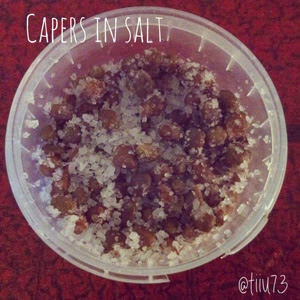Intermediate 1 for sulphite/sulfite issues. Amaranth is high in thiols and organic sulphur/sulfur and might give problems during the elimination diet.
Amaranth Flatbreads, makes 10-12
3 1/2 dl or 1 1/2 cups of Millet flour
2 1/2 dl or 1 cup of Amaranth flour
2 Tbsp. of Golden Flaxseeds, whole
1 tsp. of Himalaya salt
3 1/2 dl or 1 1/2 cup of Water
Mix all the dry ingredients in a mixing bowl well and add the water until you have a smooth mixture. If the mixture feels too hard with this amount of water add more water by tablespoons until you get the right texture. Cover the baking tray with a good quality baking paper ( if you use a good quality baking paper you have probably noticed that you can use it a couple of times) and put tablespoons of the mixture on the paper and spread circles which are about 0,5 cm high.
Bake in the oven 180 C or 350 F, about 12-15 minutes.
The Amaranth flatbreads will keep well about one week in the fridge and for longer in the freezer.
Smoked salmon with butter and capers are one of my favourite toppings with these flatbreads. I use only capers which are preserved in salt. Wash the excess salt with the running water and let the capers soak about 5-10 minutes in a clean water to get rid off the excess salt. Drain well and pat dry with a kitchen towel.

Daikon and cucumber taste also really delicious with this combination. I use a special peeler to shred daikon and cucumber in thin strips, just like spaghetti. You can drain the excess water from daikon and cucumber adding a pinch of salt, then wait about 10 minutes and pat dry the excess water or gently squeeze the excess water with your hands. Mix the daikon and cucumber together and serve on the top of the salmon. Add a splash of fresh lemon juice on top of the toppings and you have a perfect light dinner.
*Daikon is also high in thiols and organic sulphur/sulfur and can be problematic for those with sulphite/sulfite issues.










